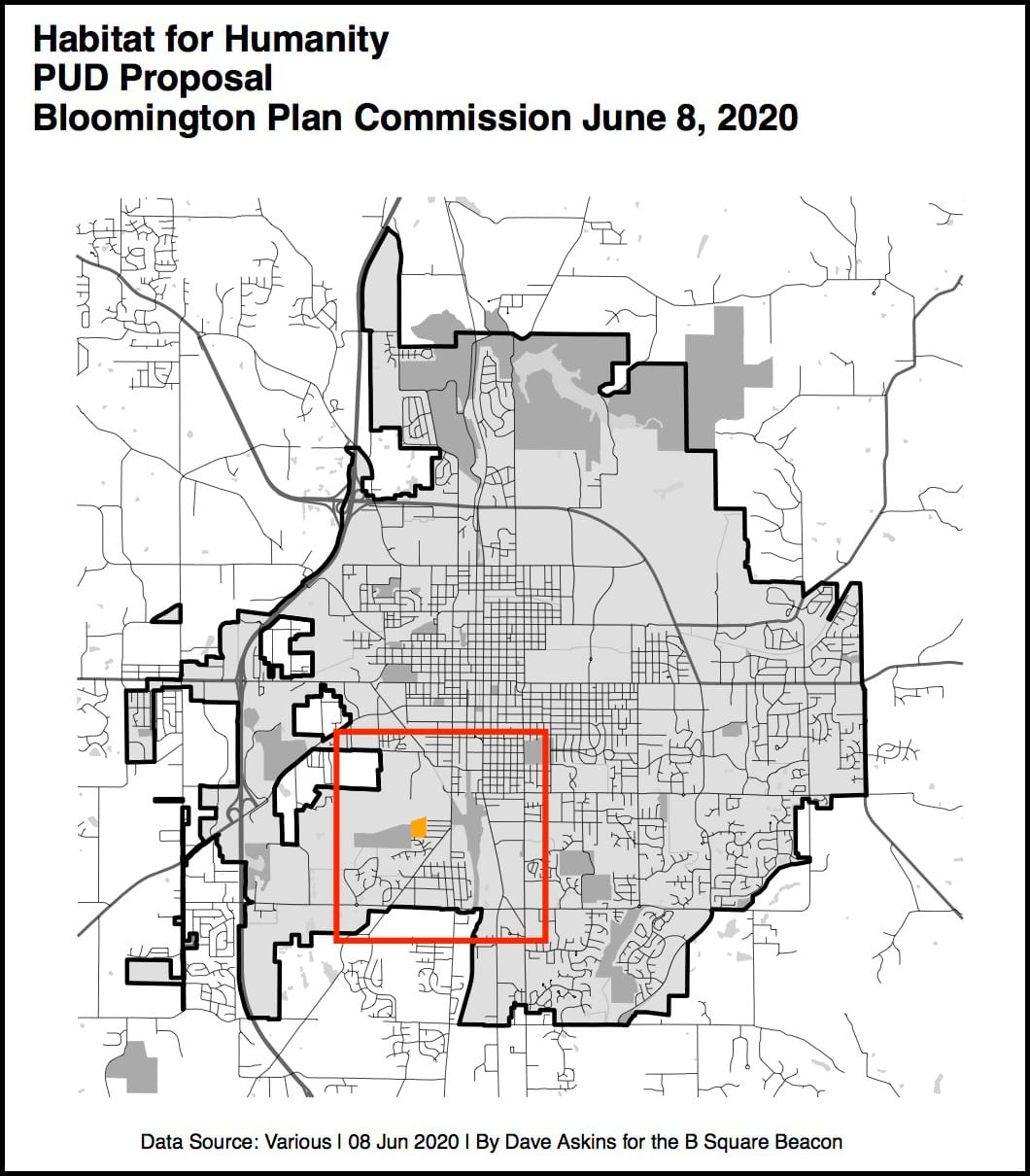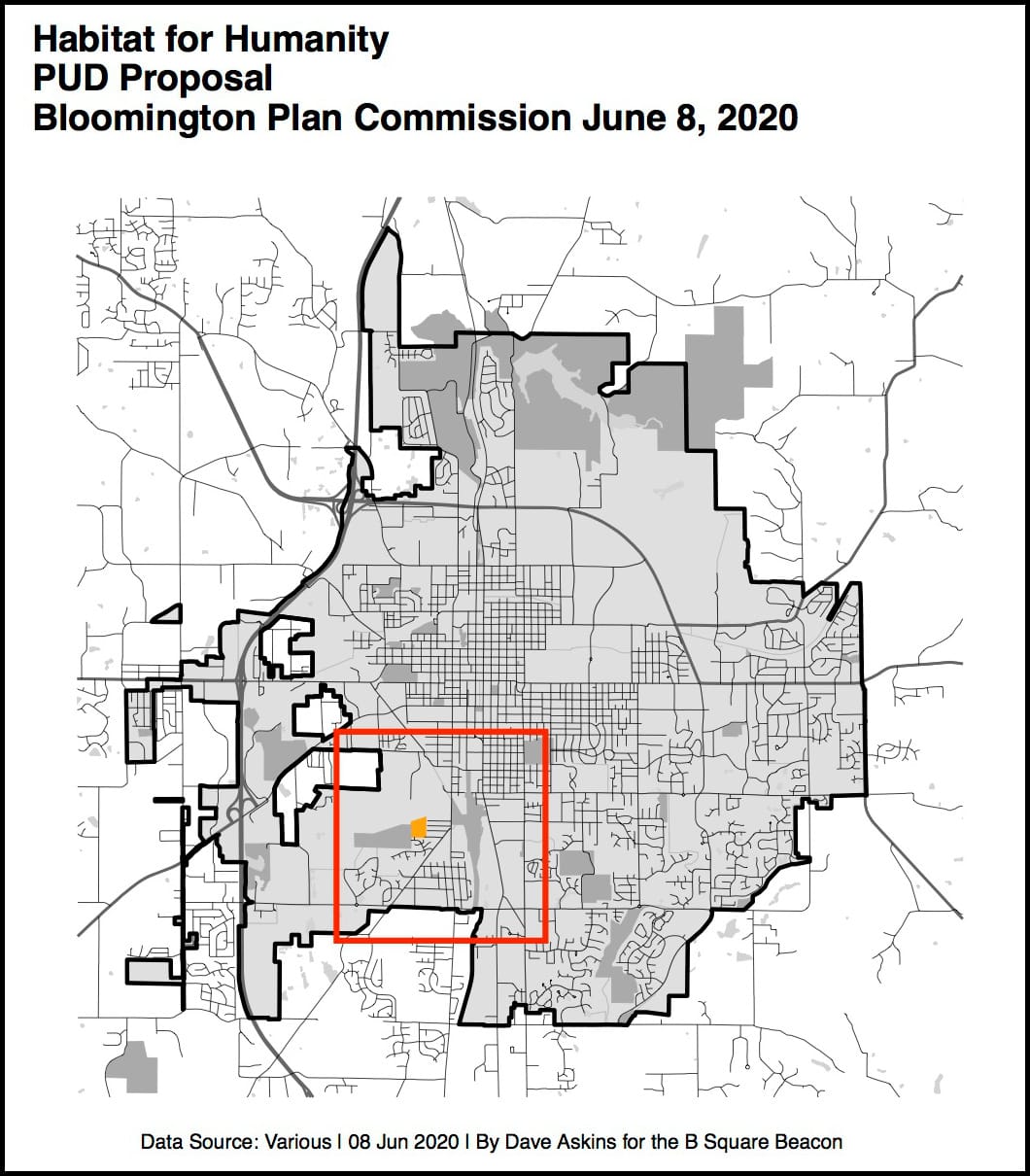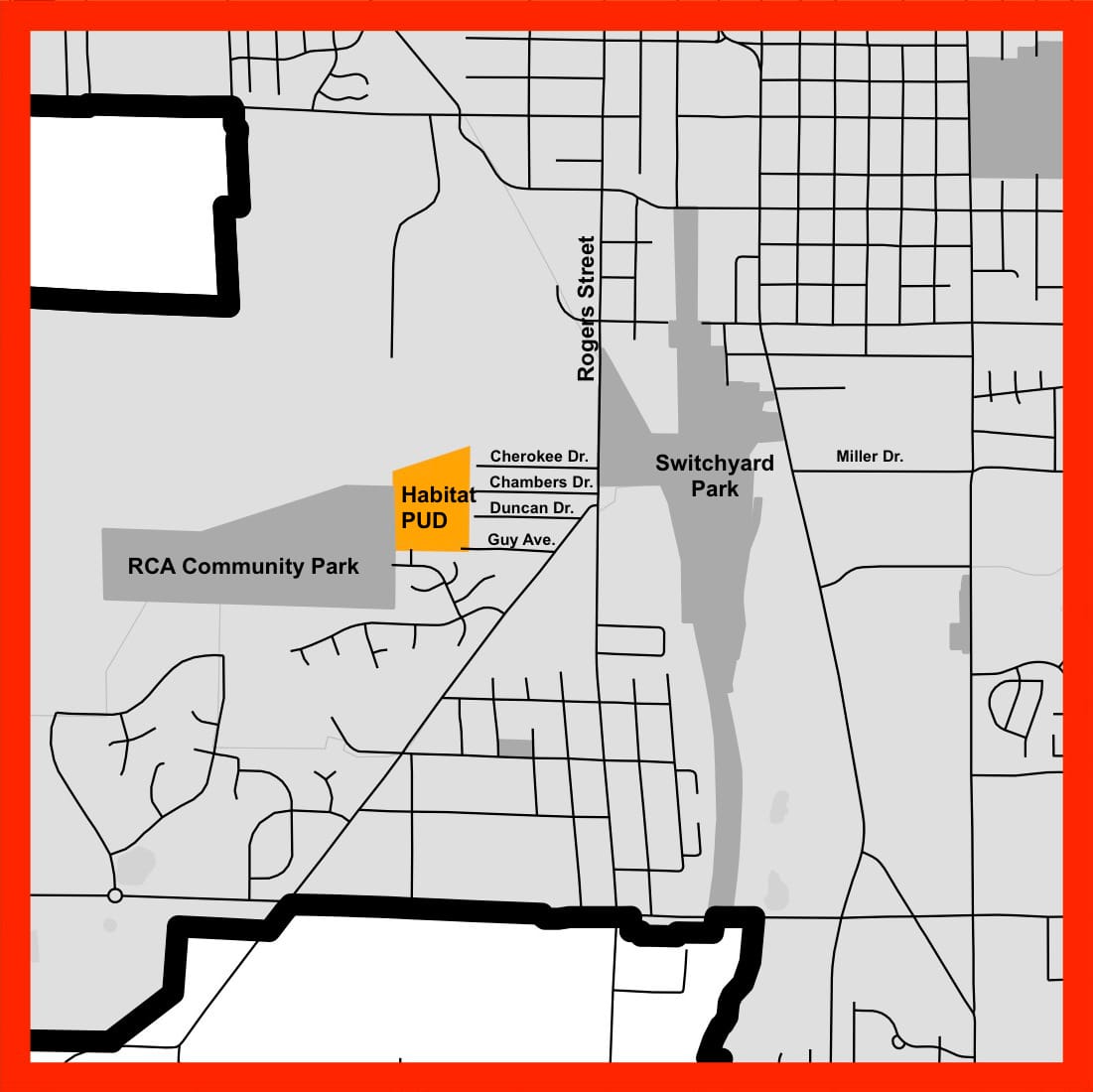Habitat for Humanity site plan OK’d by Bloomington plan commission: 69 new houses



At its regular monthly meeting on Monday, Bloomington’s plan commission approved a site plan for Osage Place, which is a Habitat for Humanity project that will put 69 houses on a nearly 13-acre parcel in the southwest part of town, just east of the RCA Community Park.
The plan commission had in June recommended the rezoning that was necessary to make the project possible.
And in August, the city council followed the plan commission’s recommendation, granting the rezoning approval.
The lot will get subdivided into 76 lots with 69 lots for single-family houses and seven lots for common areas.
According the meeting information packet, Habitat houses are built with volunteer labor and tax-deductible donations of money and materials. The houses are then sold to low-income families who make between 25 and 80 percent of the area median income (AMI).
At Monday’s plan commission meeting, Nathan Ferreira, who is director of land development and production for Habitat for Humanity of Monroe County, described the mission of Habitat for Humanity as “eliminating poverty housing by building decent, affordable homes in partnership with qualified families.”
The local Habitat organization was founded in 1988, Ferreira said, and is now wrapping up the construction of a house that will bring the total number of houses built locally to 211. That translates into about 800 people housed, more than half of them children, Ferreira said.
Ferreira described the qualification of low-income families as based on three basic criteria: the need for housing; ability to pay; and willingness to partner. Each adult in the family contributes 250 hours of volunteering called “sweat equity,” Ferreira said, and participates in homeownership classes. Osage Place will be Habitat’s third Bloomington neighborhood, he said.
The project was uncontroversial for plan commissioners.
Nearby neighbor Chad Roeder, who lives on Susie Street, to the south of the project, expressed support for the project but also had concerns about stormwater retention in the neighborhood. Roeder wanted to establish as a matter of public record that a primary concern with this project is stormwater retention.
Sharon Hoffman had similar concerns, adding that a detention pond in the area already has issues.
Responding to the concerns about stormwater management, senior zoning planner Eric Greulich said, the common areas will be handling stormwater. He also said the city’s utilities department will be reviewing the project for its grading permit. One of the requirements for the project is that the post-development runoff rate can’t exceed the predevelopment runoff rate, Greulich said.
Susan Sandberg, who serves as the city council appointment to the plan commission said she appreciated the reminder about flooding problems with the Evergreen development—that’s where Roeder lives.
Sandberg recalled that shortly after that development was built, there were ongoing problems with flooding. “I would absolutely hope that we can do more than just break even here—that we make sure that nothing from this project does in any way contribute to [flooding in Evergreen] or maybe even do some things that might ameliorate that.”
The site plan doesn’t require an additional approval by the city council.





Comments ()